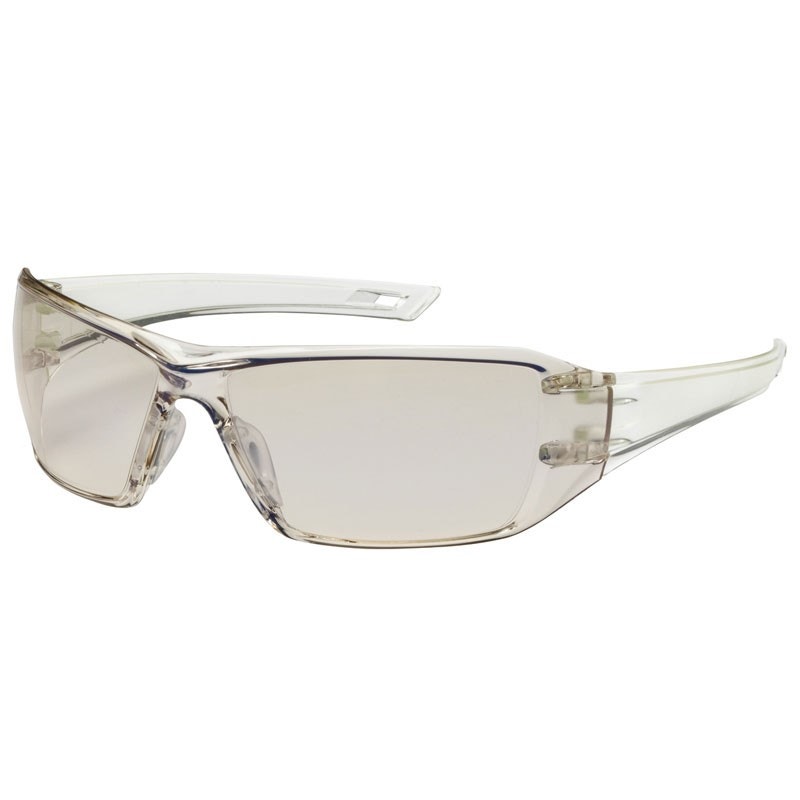Workplace Safety: Eye Protection & 90% Injury Preventability
- Aug 27, 2016
 There's a lot of talk about workplace safety, but we find that one of the most overlooked aspects of personal protection on job sites is eye protection. Protecting your eyes at work is commonplace for welders and machinists, but there are hundreds of other occupations where eye injury is a real risk that often goes unacknowledged or ignored.
There's a lot of talk about workplace safety, but we find that one of the most overlooked aspects of personal protection on job sites is eye protection. Protecting your eyes at work is commonplace for welders and machinists, but there are hundreds of other occupations where eye injury is a real risk that often goes unacknowledged or ignored.If you're working with any of the following materials or tools, it's critical that you think twice about protecting your eyes:
• Liquid Chemicals
• Powdered Chemicals
• Caustic Substances
• Grinding/Cutting Tools
• Granular Products or Materials
• High Heat or Flammable Materials
• Machines with Small Moving Parts
• Airborne or Super-Lightweight Materials
• Solvents and Cleaners
• Heavy Machinery
• Falling, Crumbling or Easily Breakable Materials/Products
• Pressurized Products/Equipment/Materials
• Sharp Objects or Sharp Moving Parts
• Fibrous Materials or Products
• Adhesives
• Intense Light
While the list may not be complete, it can provide some very real insight into the many ways your eyes can be harmed, by both accidents and/or long-term exposure.
If there's any chance of something splashing, sparking, exploding, slivering, shattering, bursting, or blowing into your eyes, you need to utilize some sort of eye protection. Whether it's googles, safety glasses or a safety shield, it might prevent you from losing your vision or suffering irreversible damage that can be debilitating, painful and costly.
According to the CDC, here are over 2,000 work-related eye injuries each day that require medical treatment in the US. ABout a third, or 650+ of those require emergency room visits.
Even when wearing eye protection, studies have shown that 40% of these eye injuries occur when people are wearing eye protection - but wearing the improper type or wearing them wrong way was a major factor. While certain eye injuries can happen even when eye protection is properly utilized, the majority of injuries in which eye protection was being used is due to safety glasses without side shields.
Not surprisingly, almost 70% of all accidents involving eye injury occur from flying or falling objects, sparks and debris striking the eye. Of the injured workers themselves, 3/5 of them estimate that the particle causing the damage was smaller than a pinhead and traveling faster than an object that had been thrown. This valuable insight, along with other statistics tells us that tiny, fast moving particles are the most common cause of eye injuries. There are many ways this can occur, from a simple gust of wind to piece of aluminum dust being thrown up by a sander or cutting tool.
Accidents happen, that why they're called accidents. However, eye injuries are one of the only injuries that experts claim to be 90% avoidable.
We often take our eyes for granted, but we need to make a better effort to expect the unexpected. It might take some getting used to and it may be a minor annoyance, but improving your use of eye protection could end up saving your sight and your career. Life is too short to suffer avoidable accidents, and it only makes sense to protect your eyes from common workplace hazards.
Learn more about eye protection from the American Academy of Ophthalmology and the CDC's Eye Safety Resources & Information page. Stay safe out there!


 Thanks to the technological advancements and manufacturing breakthroughs of the last 15 to 20 years, there have been some major advancements in the quality of protective eye wear. Long gone are the days of large, bulky, uncomfortable box-like lenses featuring crude rubber headbands and rather unappealing characteristics.
Thanks to the technological advancements and manufacturing breakthroughs of the last 15 to 20 years, there have been some major advancements in the quality of protective eye wear. Long gone are the days of large, bulky, uncomfortable box-like lenses featuring crude rubber headbands and rather unappealing characteristics.